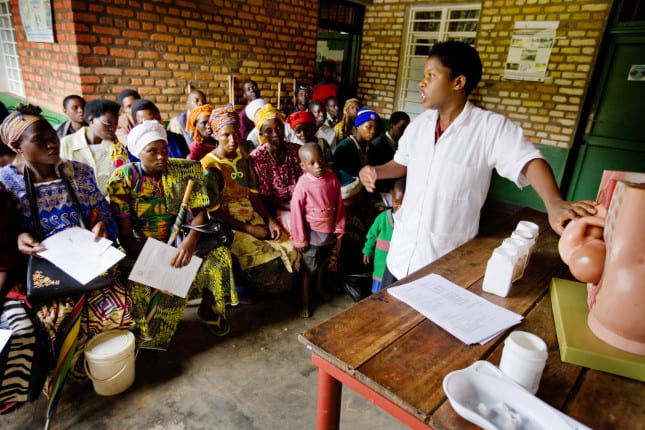
by hhd19 | Nov 19, 2023 | Dashboard
Introduction:
In the dynamic world of economics, trade balances play a pivotal role in determining a country’s financial health. This visualization offers a clear and concise representation of Lebanon’s trade situation over the recent years, focusing on the comparison between the exports and imports of goods and services as a percentage of GDP.
Context:
Lebanon, a country with a rich trading history, has faced various economic challenges exacerbated by political instability and global market fluctuations. Understanding the trade trends is crucial for policy-makers, businesses, and academicians to assess the country’s economic resilience and to strategize for future growth.
These pie charts are a visual summary of the economic challenges faced by Lebanon in terms of trade. They underscore the need for strategic planning and diversified economic reform to build a more balanced and self-sufficient economic structure.
In 2019, the pie chart illustrates that imports considerably outweighed exports, indicating a trade deficit. This imbalance suggests that the country was consuming more than it was producing for external markets.
2020 shows a slight shift with the reduction in imports and a marginal increase in exports. This change could be indicative of various factors, such as a change in economic policy, a response to external economic pressures, or the impact of the global events of that year, like the COVID-19 pandemic.
By 2021, the gap between imports and exports continues to persist, although there’s a noticeable improvement in the trade balance, with exports comprising a larger section of the pie.
Problem:
Lebanon is grappling with a trade deficit.
Solutions:
1- Diversification of Exports: Investing in diverse sectors to increase the range of goods and services for export.
2- Improving Domestic Production: Enhancing the quality and quantity of domestic production to reduce reliance on imports.
3- Trade Agreements: Entering into new trade agreements that favor Lebanese exports or revising existing ones to improve trade terms.
After working on these strategies developing these ideas, and through careful analysis and responsive policymaking, Lebanon can work towards a future where its exports and imports are in a healthier balance.

by Karim Ahmad | Apr 14, 2022 | Dashboard, Visualization
“The enemy doesn’t stand a chance when the victim decides to survive.” – Rae Smith
How Is It Justified?
Globally, 1 in 3 women have been subjected to partner violence, and it becomes worst when women consider this violence justifiable. Early marriage is a major reason that women think it’s okay to be beaten up by their spouses, usually, spousal age differences, power inequalities, un-continued education, and a lack of female autonomy are all common features of early age marriages. These factors have been linked to an increased risk of domestic violence and affected women’s awareness of their entitlement, self-esteem, status, and their sense of empowerment.
In most African countries and some Asian countries, women believed spousal violence is justified and that can be linked to high percentages of female adolescents out of school and early marriages in these countries.
Even globally numbers are still worrying, the average number of women who believed a husband is justified in beating up his wife is still Relatively high. With the average number of female adolescents out of school being steady over the past 22 years, marriages at a young age are still taking place and resulting in more domestic violence since spousal age difference can make women more vulnerable to health risks and social Isolation by creating power dynamics. These power dynamics can increase girls’ vulnerability to emotional, physical, and sexual abuse.
According to the WDI (World Development Indicators) data some of the justified reasons for domestic violence were:
- When women argue with the husband
- When she burns the food
- When she goes out without telling him
- When she neglects the children
- When she refuses sex with him
Taking Action!
So, you might ask, what can be done? Well, a lot actually. To start with, empowering young women are essential. This can be done through:
- Enhance girls’ access to a high-quality education
- Empower girls with information, skills, and support networks
- Provide financial assistance and incentives to young women and their families
- Educate and rally parents and the community members
Education is crucial in preventing females from marrying as adolescents. In fact, the longer a girl stays in school, the less likely she is to marry and have children before she toms 18 years old. Furthermore, education ensures that girls have the skills and information they need to find work and support their families. This can aid in breaking the cycle of poverty and preventing child marriages caused by extreme poverty and/or financial gains.
Final Recommendations
Education, economic status, and age gap are the main factors behind early marriages and domestic violence. It’s recommended to Promote education and economic opportunities for girls & Employ behavior change communication and community mobilization techniques to change social norms regarding age and marriage.

by ami31 | May 9, 2021 | Dashboard, Visualization
Childbirth is considered to be a landmark and joyous moment in any woman’s life. And although health experts say that no two childbirth experiences are the same, it is quite astounding that this can, in many cases, reach the extreme of death. According to statistics released by UNICEF, the World Health Organization (WHO), the United Nations Population Division, United Nations Population Fund (UNFPA) and the World Bank Group, around 2.8 million pregnant women and newborns die every year of preventable causes [1]. This turns childbirth into an event to be feared as it poses a significant threat to the lives of many women across the globe. According to the United Nations’ , quality education is defined as one the of the seventeen sustainable development goals (SDGs), so how can education help mitigate childbirth mortality?
“Pregnancy is not a disease. It should not lead to deaths. Every maternal death should be regarded as an abnormality.” – Vivianne Ihekweazu, Director of the Nigerian Health Watch [2]
How are Childbirth Deaths Related to Education?
The World Development Indicators data from the World Bank [3] allows us to look into the impact of education on childbirth by exploring the percentage of births that are handle by skilled health staff. In the figure below, we plot the average life expectancy at birth in years with respect to the average percentage of births attended by skilled staff for each country. There is a clear positive correlation between the two variables. We therefore conclude that children who are delivered by skilled health workers during labor are more likely to have a higher life expectancy.
However, the impact of having educated people overseeing child delivery does not stop here. Unfortunately, carrying out child delivery without proper understanding of the necessary health procedures has more alarming implications. In the dashboard below, we notice a sharp decrease in both maternal mortality (women dying during labor) and neonatal mortality (newborns dying at birth) in countries where more childbirths are handled by skilled health workers. This implies that many of the childbirth related deaths can be attributed to the lack of necessary health skills.
Where are these Childbirth Deaths Mostly Occurring?
Below we find the places that suffer the most from this by selecting the countries that have a below average percentage of births attended by skilled staff.
By looking at the geographical distribution of these countries we unsurprisingly find that the majority is located in Africa. Furthermore, we notice that the educational attainment in these countries is significantly lower than countries that have more professionally handled childbirths. This is an expected causality since to have more skilled people perform childbirth procedures we need more educated people.
So the Solution Is, Educate More People!
“The benefits of education permeate all walks of life right from the moment of birth.” – Irina Bokova, Director-General of UNESCO [4]
In light of the above, we clearly need to have more educated people that are able to professionally handle childbirth procedures. This is especially needed in developing countries where childbirth mortality is more pronounced. A key approach strategy here is to educate the local birth attendants and community midwives that are already active in these communities. These local and community health workers are already more connected to the women and families in their towns making their newly found skills more accessible and allowing them to spread health awareness to pregnant women in their communities [5]. Finally some communities in rural Africa are located in remote locations faraway from any medical supply and service centers. Therefore, setting up portable medical outposts near these towns would greatly enhance the quality of services provided by birth attendants.
References
[2] E. Onyeji, “Despite having highest maternal mortality in Africa, Nigeria’s situation still underreported – Report,”
Premium Times Nigeria, 03-Dec-2020. [Online]. Available:
https://www.premiumtimesng.com/news/headlines/429266-despite-having-highest-maternal-mortality-in-africa-nigerias-situation-still-underreported-report.html.
[3] https://datatopics.worldbank.org/world-development-indicators/
[4] “Education can save lives, help reach sustainable development goals – UN agency,”
UN News, 18-Sep-2014. [Online]. Available:
https://news.un.org/en/story/2014/09/477702-education-can-save-lives-help-reach-sustainable-development-goals-un-agency.
[5] D. Shikuku and C. Ameh, “Investing in midwifery training and education for improved maternal and newborn outcomes,”
On Medicine, 19-Mar-2021. [Online]. Available:
https://blogs.biomedcentral.com/on-medicine/2021/03/19/midwifery-training-education-maternal-newborn-outcomes-isrctn/.

by Nour Chaccour | May 7, 2020 | Dashboard, Visualization
It will be interesting to explore what all insights can be obtained from a Netflix dataset.




